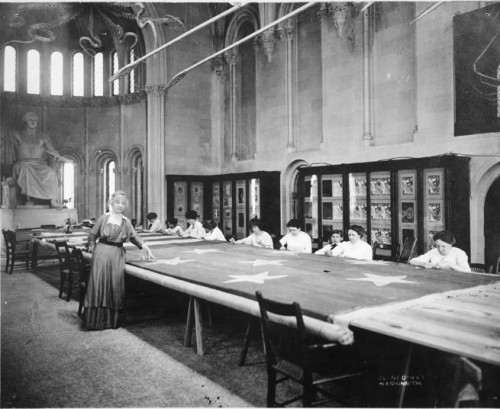
‘Old Glory’
courtesy of ‘Tyrannous’
In honor of Flag Day, the Smithsonian Snapshot brings you some history of a very famous flag. In the summer of 1813, Mary Pickersgill was contracted to sew a 30 x 42–foot garrison flag for Fort McHenry in Baltimore, Maryland. That flag later became known as the Star-Spangled Banner, the very flag that inspired Francis Scott Key to write what later became the national anthem. The flag remained the private property of the commander of Fort McHenry, Lieutenant Colonel Armistead’s widow, Louisa Armistead, his daughter Georgiana Armistead Appleton and his grandson, New York stockbroker Eben Appleton, for 90 years.
In 1912, Appleton donated the flag to the Smithsonian with the intention to “present the flag to an institution where it could conveniently be seen by the public and where it would be well cared for.”

Amelia Fowler and her team restoring the flag, circa 1914; photo courtesy Smithsonian Institution
In 1914, the Smithsonian hired Amelia Fowler, a professional flag restorer, to preserve the flag, which was in delicate condition. Fowler, shown here with her team of needlewomen, used her patented preservation technique of creating a web of stitches to secure the flag to a linen backing. This preservation technique allowed the flag to be displayed to the public in a specially constructed glass case in the Smithsonian’s Arts and Industries building. In 1964, the flag was moved to what was then the Smithsonian’s newest museum—now known as the National Museum of American History.
The Star-Spangled Banner is currently on display at the Smithsonian’s National Museum of American History.



